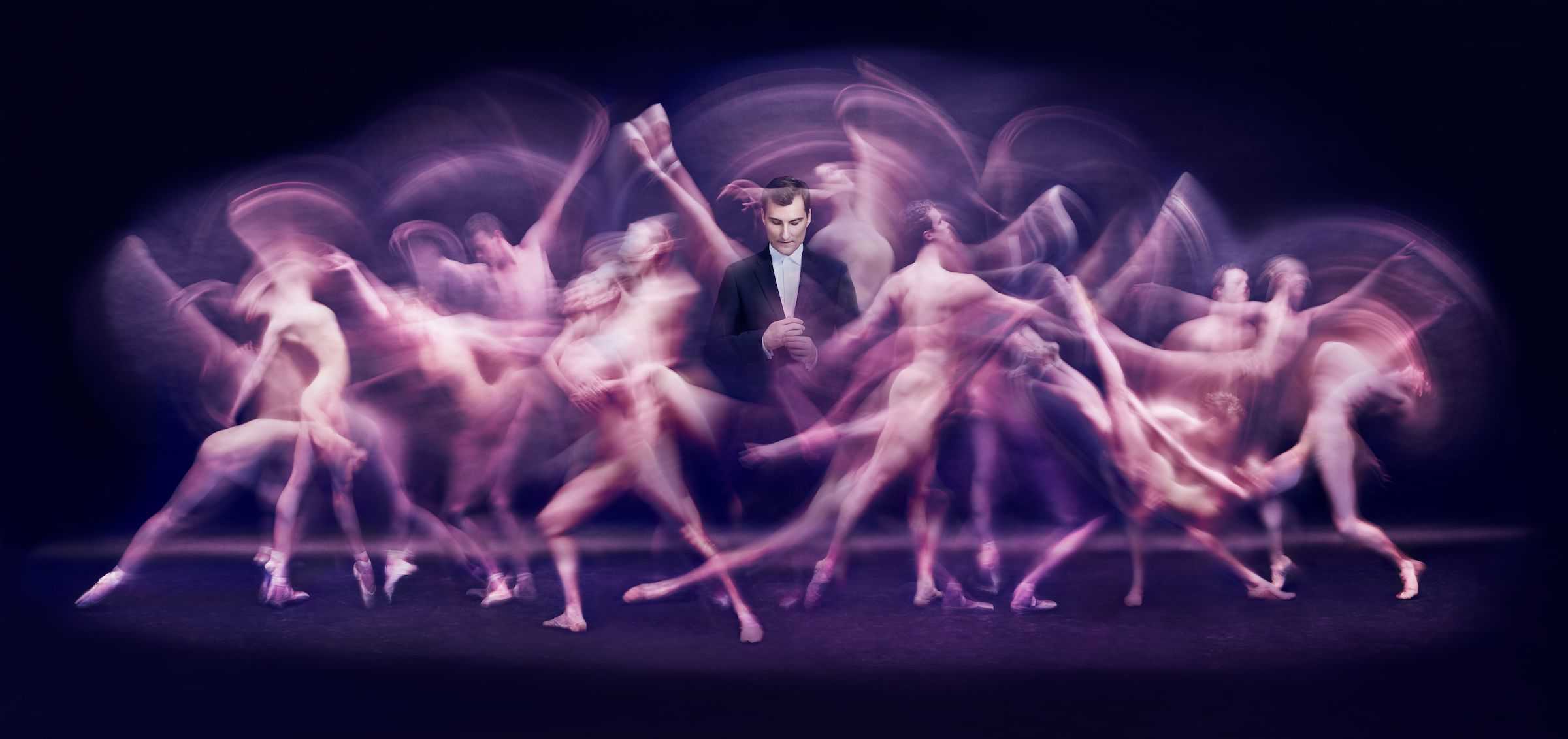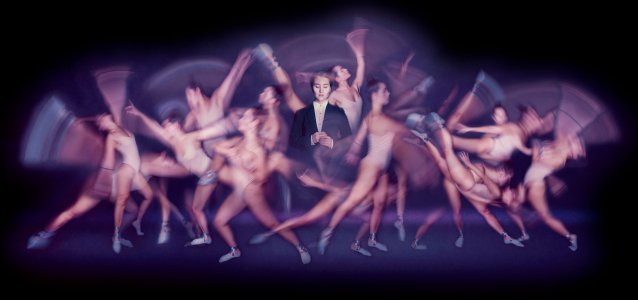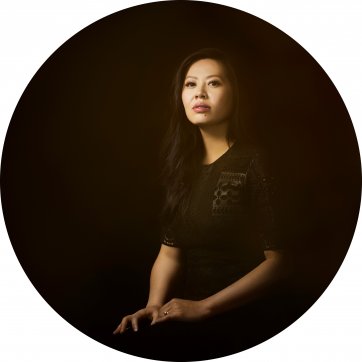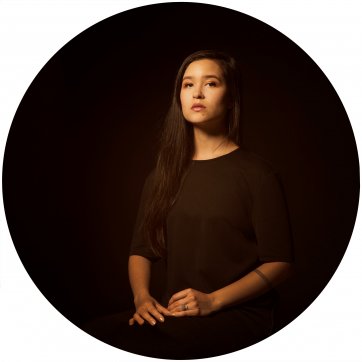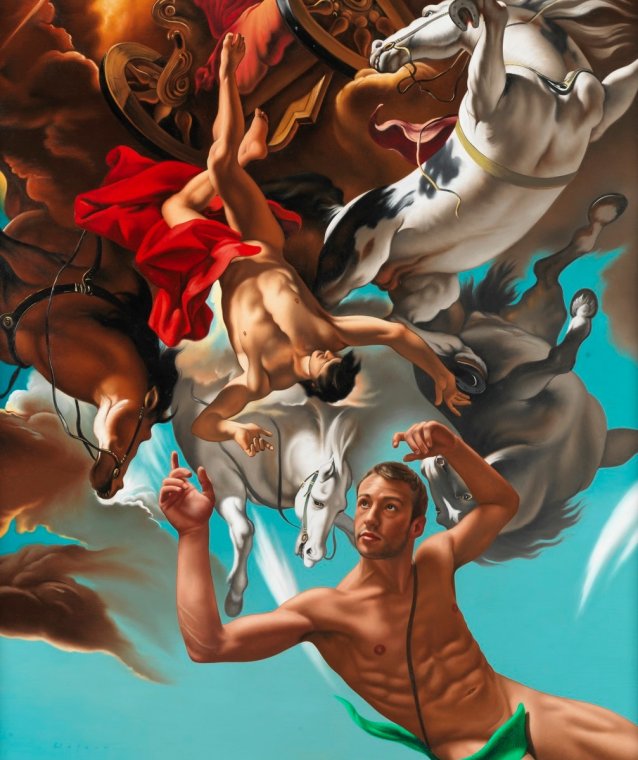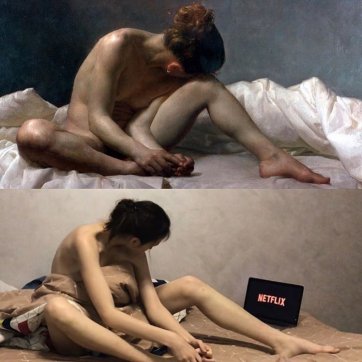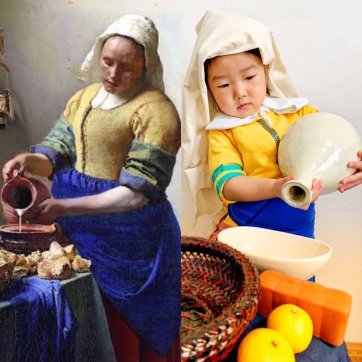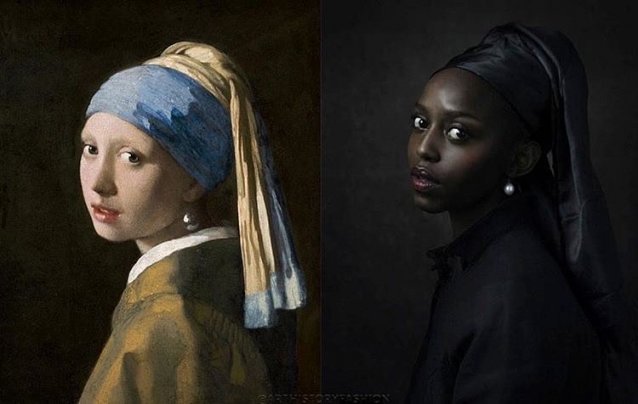‘People get really, really into it’, laughs Andy Mullens, the Portrait Gallery’s Social Media Coordinator. ‘I look forward to it every year. I choose works that resonate with me, and the more technically challenging a portrait is, the more I’m drawn to it.’
One of Andy’s greatest triumphs is her tribute to Peter Brew-Bevan’s The Dance – David McAllister (2016), a tender and powerful ode to the iconic Artistic Director of the Australian Ballet. To create the work, Andy locked herself in a studio for hours, armed with a bodysuit and a blown-up image of Brew-Bevan’s work.
‘I studied that portrait so much – every detail, every little bit – zooming in and pulling back out. I spent a lot of time with Peter’s sketch books as well, which he generously provided to the Gallery. That kind of intense focus gave me a different relationship with the portrait. I used LED lights so I had soft lighting to get the slow movement, and had a timer on my phone linked to my camera. I’m not at all trained in ballet and I can’t go en pointe. I’d press the timer on my phone, run into the frame, fling up a leg and hope for the best!’
For Peter Brew-Bevan, Andy’s meticulous efforts served as an extension of the intense consideration with which he approached the portrait. ‘Before I start a new artwork, I do research on the subject matter’, he explains. ‘Through reading about David’s incredible career and passion that he has for movement and the artform of ballet, I knew I wanted to create something to capture the epic nature of his productions and choreography ... When I saw Andy’s tribute to this artwork, I felt deeply humbled. To know someone gave my work that much attention is quite moving. I wasn’t expecting it.’
Andy describes sharing her tribute to Peter’s work on social media during the COVID-19 lockdown as one of the most rewarding elements of the process. ‘You do these things mostly for the joy of it. Right now, people are sharing their creativity on social to stay connected during a disconcerting time; it all feels a little more earnest. To know that Peter’s seen and likes my tribute is beautiful. It warms my heart. No matter what kind of art you make, you inevitably take something very deep and intimate and make the private public. Vulnerability is always rewarded.’
